- Flowering Period:June, July, August, September
- Final height:80cm to 100cm
- Final width:80cm to 100cm
- Available:February, March, April, May, June, July, August, September, October, November
- Fragrances:lightly scented
- Use:beds/borders, for containers, as a hedge, for group plantings, as a specimen plant
- Hardiness:hardy
- Soil:moist, heavy, moderately heavy, neutral, acidic, slightly acidic
- Location:partial shade
- Flower Colour:pink, grey
- Leaf Colour:green
-
Out of stock
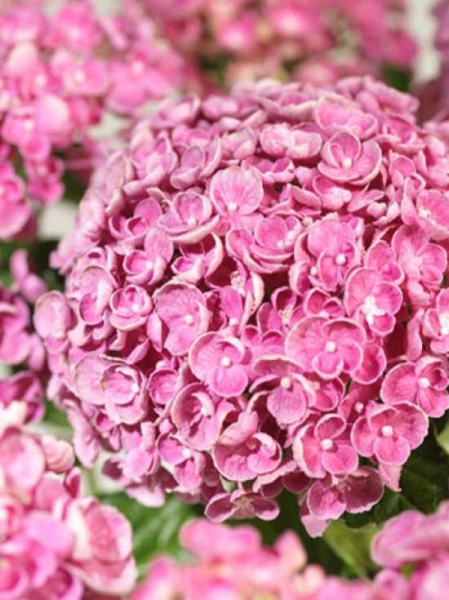
-
Out of stock
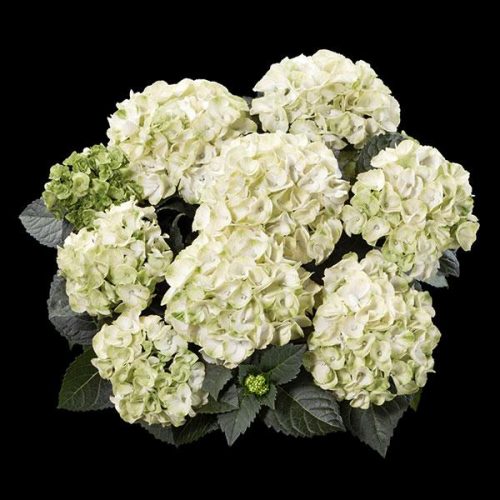 Hydrangea Macrophylla Caipirinha is a compact deciduous shrub with dark green ovate toothed leaves. During the summer it has beautiful rounded clusters of white mop head flowers fading with age to dark green with a red border around each petal at the end of the flower. Eventual height and spread up to 1.2 metres pot size: 3L
Hydrangea Macrophylla Caipirinha is a compact deciduous shrub with dark green ovate toothed leaves. During the summer it has beautiful rounded clusters of white mop head flowers fading with age to dark green with a red border around each petal at the end of the flower. Eventual height and spread up to 1.2 metres pot size: 3L -
Out of stock
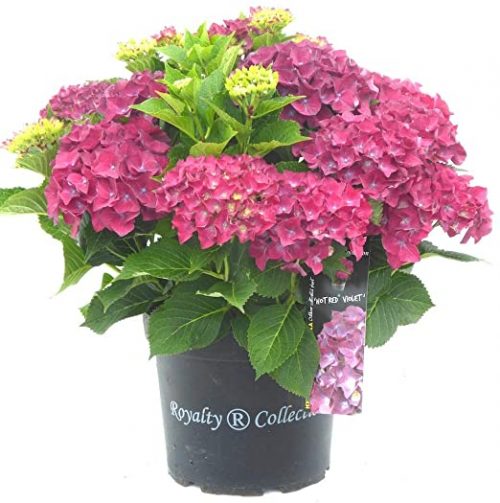 A medium sized deciduous shrub with deep purple/pink-red mophead blooms in summer above dark purple tinged green foliage, when grown in neutral to alkaline soils. Flowers in summer and may change to blue/mauve shades when grown on acidic soils or pink on neutral soils.
A medium sized deciduous shrub with deep purple/pink-red mophead blooms in summer above dark purple tinged green foliage, when grown in neutral to alkaline soils. Flowers in summer and may change to blue/mauve shades when grown on acidic soils or pink on neutral soils.- Flower Colour: Pink, Red
- Flower Type: Mophead
- Flowering Month: June, July, August, September
- Soil Type: Alkaline, Normal
- Aspect: Partial Shade
- Hardiness*: Hardy
- Foliage Type: Deciduous
- Foliage Colour: Green, Bronze/purple
- Height after 10 years*: 0.9-1.2m (3-4ft)
- Pot Size: 3 Litre
-
Out of stock
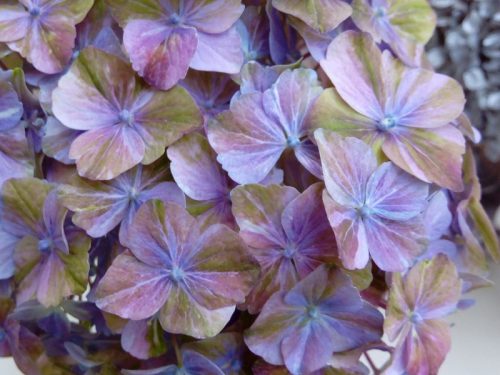 Large purple-green mophead shaped flowerheads with frilly edges when grown in neutral to alkaline soils. Position: They perform best when given a shady, cool moist root run and a sheltered aspect. Maintenance: Mophead hydrangeas require little pruning, simply thin out old stems and remove the dead flowers to a pair of plump green buds in late spring.
Large purple-green mophead shaped flowerheads with frilly edges when grown in neutral to alkaline soils. Position: They perform best when given a shady, cool moist root run and a sheltered aspect. Maintenance: Mophead hydrangeas require little pruning, simply thin out old stems and remove the dead flowers to a pair of plump green buds in late spring.- Flower Colour: Green, Purple
- Flower Type: Mophead
- Flowering Month: June, July, August, September
- Soil Type: Alkaline, Normal
- Aspect: Partial Shade
-
Out of stock
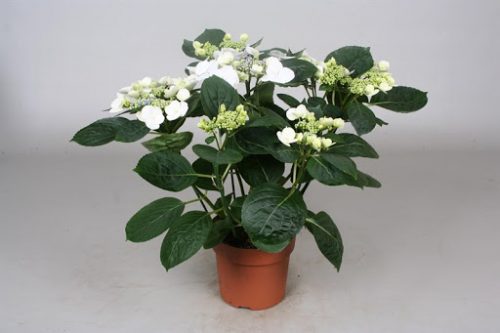
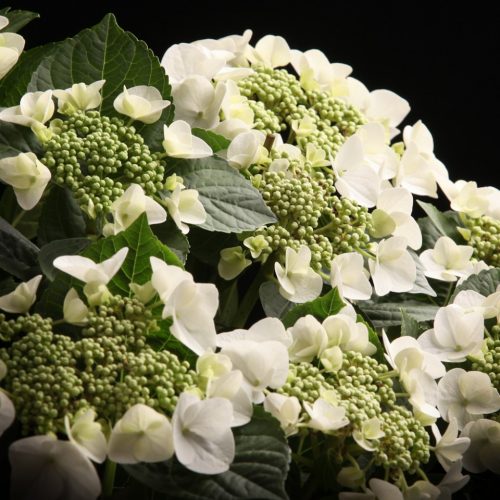 Hydrangea macrophylla ‘Benxi’ Shrubbery suitable for the rock garden rich, fresh, as preferable exposure Partial shade – Shade color White Flowering period is June – September Height 100 cm – 120 cm Density 1 potted seedlings per square meter, Diameter pot 19cm
Hydrangea macrophylla ‘Benxi’ Shrubbery suitable for the rock garden rich, fresh, as preferable exposure Partial shade – Shade color White Flowering period is June – September Height 100 cm – 120 cm Density 1 potted seedlings per square meter, Diameter pot 19cm -
Out of stock
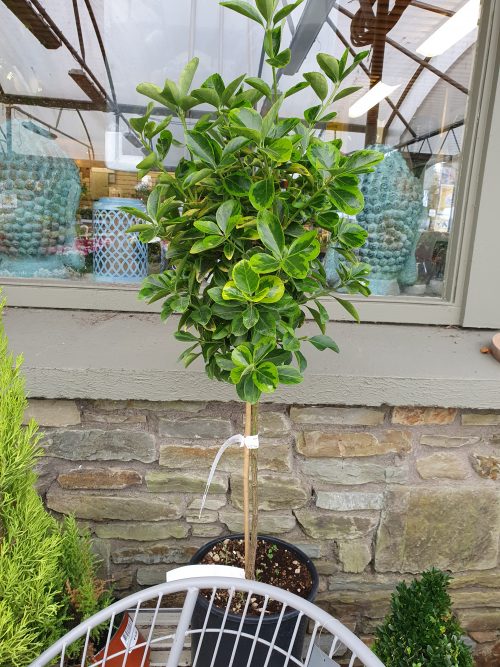
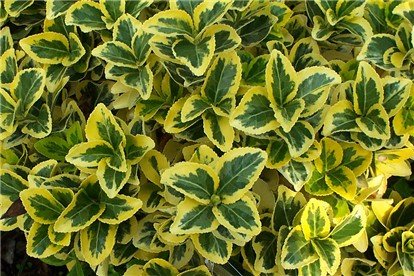 Euonymus japonicus Aureus is an evergreen variety and provides year round interest. Excellent for growing as a specimen shrub or small hedge. Also suitable for coastal areas. The attractive leathery leaves are dark green with bright yellow edges.A Decorative Foliage
Euonymus japonicus Aureus is an evergreen variety and provides year round interest. Excellent for growing as a specimen shrub or small hedge. Also suitable for coastal areas. The attractive leathery leaves are dark green with bright yellow edges.A Decorative Foliage- Pot size: 7.5L
- Height: 4m
- Spread: 2m
- Leaf colour: variegated
- Plant location: sunny
- Plant depth: 15 cm
- Hardiness: -15 Celsius
- Harmful if eaten
- Preferred soil: Grows in any soil
-
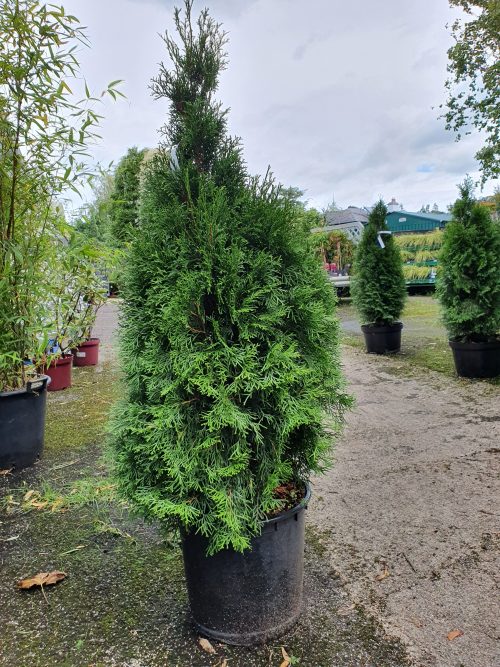 A slow growing, evergreen, erect conifer, Thuja occidentalis Smaragd has scale-like, fresh green leaves that are held closely to the shoots and give a fresh apple-like aroma when crushed. With its narrow, conical shape, Smaragd makes a useful tree for any garden, and is particularly suitable for formal plantings either as an individual specimen or in rows. It is slow to reach its eventual height of around 8-10ft but the narrow, conical shape will broaden out with maturity to reach a diameter of around 6ft. Pot size: 20L Actual height: 100-125cm Site: Very tolerant of inland exposure Soil: Well drained, tolerates clay soils, shallow over chalky soils Position: Full sun, tolerates partial shade Season of Interest: All year round and aromatic foliage Hardiness: Fully hardy Height: 5-8ft (1.5-2.5m) Spread: 3-6ft (1-2m)
A slow growing, evergreen, erect conifer, Thuja occidentalis Smaragd has scale-like, fresh green leaves that are held closely to the shoots and give a fresh apple-like aroma when crushed. With its narrow, conical shape, Smaragd makes a useful tree for any garden, and is particularly suitable for formal plantings either as an individual specimen or in rows. It is slow to reach its eventual height of around 8-10ft but the narrow, conical shape will broaden out with maturity to reach a diameter of around 6ft. Pot size: 20L Actual height: 100-125cm Site: Very tolerant of inland exposure Soil: Well drained, tolerates clay soils, shallow over chalky soils Position: Full sun, tolerates partial shade Season of Interest: All year round and aromatic foliage Hardiness: Fully hardy Height: 5-8ft (1.5-2.5m) Spread: 3-6ft (1-2m) -
Out of stock
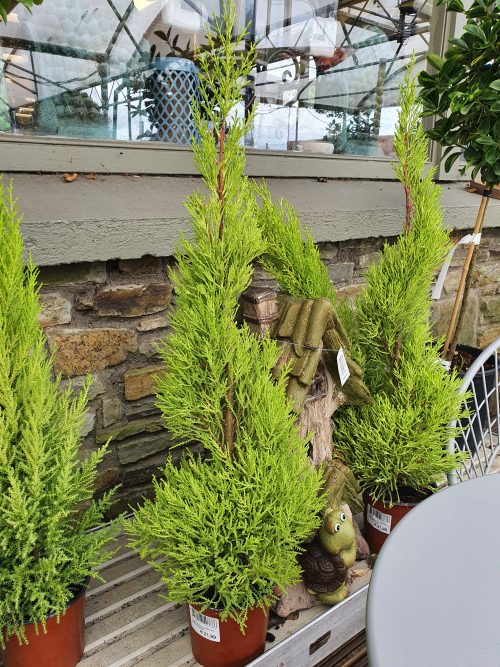
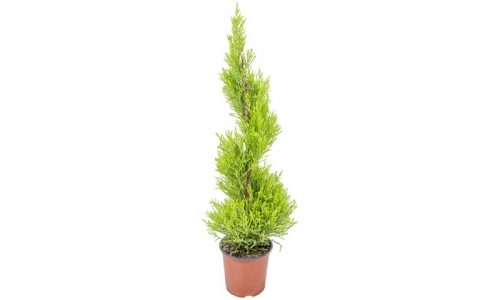 Cupressus macrocarpa 'Goldrest Wilma' is one of the most attractive golden-foliage columnar conifers. Bright golden-yellow foliage. Any free-draining soil in sun or partial shade. Rate of growth up to 60cm per year. Can be used for hedging but doesn't trim quite as well as leylandii. If used for hedging, plant 60-90cm apart. Can be trimmed to keep at the required height Plant Size • Mature Height: 10m • Mature Spread: 2-3m Why We Love It • These trees work wonderfully as topiaries • Fresh lemony scent • Easy to maintain What To Know • Fruit Season: Fall • Position: Full sun • Soil: Well drained • Rate of Growth: Moderate to fast How to Care • In general, growing lemon cypress is not difficult. The trees require well-draining soil, but are not picky about whether it is loamy, sandy or chalky. They also accept acidic, neutral or alkaline soil. • Water regularly - weekly, or more often in extreme heat or containers. • Trimming/Pruning If this plant is used for hedging, it will need to be pruned regularly. It will have to be trimmed to maintain the required height. Use sharp pruning shears to remove the sucker branches and the errant branches that are growing in the wrong direction or making it difficult to fertilize the tree. Since lemon cypress has a conical habit, trim the tree as per its natural shape. Trimming should be done every week during the summer. • Fertilizer Fertilize with the standard, slow-releasing fertilizer that has an equal amount of nitrogen, phosphorus, and potassium once a month. You can also supplement the soil annually with turf fertilizers that contain other nutrients such as magnesium, boron, copper, and zinc
Cupressus macrocarpa 'Goldrest Wilma' is one of the most attractive golden-foliage columnar conifers. Bright golden-yellow foliage. Any free-draining soil in sun or partial shade. Rate of growth up to 60cm per year. Can be used for hedging but doesn't trim quite as well as leylandii. If used for hedging, plant 60-90cm apart. Can be trimmed to keep at the required height Plant Size • Mature Height: 10m • Mature Spread: 2-3m Why We Love It • These trees work wonderfully as topiaries • Fresh lemony scent • Easy to maintain What To Know • Fruit Season: Fall • Position: Full sun • Soil: Well drained • Rate of Growth: Moderate to fast How to Care • In general, growing lemon cypress is not difficult. The trees require well-draining soil, but are not picky about whether it is loamy, sandy or chalky. They also accept acidic, neutral or alkaline soil. • Water regularly - weekly, or more often in extreme heat or containers. • Trimming/Pruning If this plant is used for hedging, it will need to be pruned regularly. It will have to be trimmed to maintain the required height. Use sharp pruning shears to remove the sucker branches and the errant branches that are growing in the wrong direction or making it difficult to fertilize the tree. Since lemon cypress has a conical habit, trim the tree as per its natural shape. Trimming should be done every week during the summer. • Fertilizer Fertilize with the standard, slow-releasing fertilizer that has an equal amount of nitrogen, phosphorus, and potassium once a month. You can also supplement the soil annually with turf fertilizers that contain other nutrients such as magnesium, boron, copper, and zinc -
Out of stock
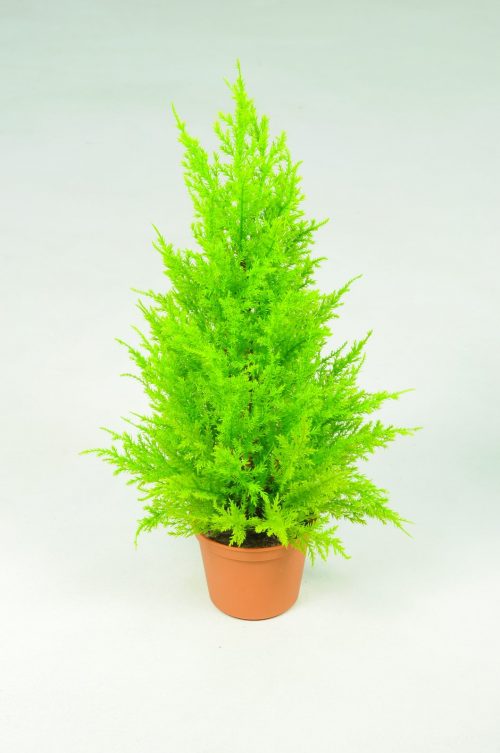 Cupressus macrocarpa 'Goldrest Wilma' is one of the most attractive golden-foliage columnar conifers. Bright golden-yellow foliage. Any free-draining soil in sun or partial shade. Rate of growth up to 60cm per year. Can be used for hedging but doesn't trim quite as well as leylandii. If used for hedging, plant 60-90cm apart. Can be trimmed to keep at the required height Plant Size • Mature Height: 10m • Mature Spread: 2-3m Why We Love It • These trees work wonderfully as topiaries • Fresh lemony scent • Easy to maintain What To Know • Fruit Season: Fall • Position: Full sun • Soil: Well drained • Rate of Growth: Moderate to fast How to Care • In general, growing lemon cypress is not difficult. The trees require well-draining soil, but are not picky about whether it is loamy, sandy or chalky. They also accept acidic, neutral or alkaline soil. • Water regularly - weekly, or more often in extreme heat or containers. • Trimming/Pruning If this plant is used for hedging, it will need to be pruned regularly. It will have to be trimmed to maintain the required height. Use sharp pruning shears to remove the sucker branches and the errant branches that are growing in the wrong direction or making it difficult to fertilize the tree. Since lemon cypress has a conical habit, trim the tree as per its natural shape. Trimming should be done every week during the summer. • Fertilizer Fertilize with the standard, slow-releasing fertilizer that has an equal amount of nitrogen, phosphorus, and potassium once a month. You can also supplement the soil annually with turf fertilizers that contain other nutrients such as magnesium, boron, copper, and zinc
Cupressus macrocarpa 'Goldrest Wilma' is one of the most attractive golden-foliage columnar conifers. Bright golden-yellow foliage. Any free-draining soil in sun or partial shade. Rate of growth up to 60cm per year. Can be used for hedging but doesn't trim quite as well as leylandii. If used for hedging, plant 60-90cm apart. Can be trimmed to keep at the required height Plant Size • Mature Height: 10m • Mature Spread: 2-3m Why We Love It • These trees work wonderfully as topiaries • Fresh lemony scent • Easy to maintain What To Know • Fruit Season: Fall • Position: Full sun • Soil: Well drained • Rate of Growth: Moderate to fast How to Care • In general, growing lemon cypress is not difficult. The trees require well-draining soil, but are not picky about whether it is loamy, sandy or chalky. They also accept acidic, neutral or alkaline soil. • Water regularly - weekly, or more often in extreme heat or containers. • Trimming/Pruning If this plant is used for hedging, it will need to be pruned regularly. It will have to be trimmed to maintain the required height. Use sharp pruning shears to remove the sucker branches and the errant branches that are growing in the wrong direction or making it difficult to fertilize the tree. Since lemon cypress has a conical habit, trim the tree as per its natural shape. Trimming should be done every week during the summer. • Fertilizer Fertilize with the standard, slow-releasing fertilizer that has an equal amount of nitrogen, phosphorus, and potassium once a month. You can also supplement the soil annually with turf fertilizers that contain other nutrients such as magnesium, boron, copper, and zinc -
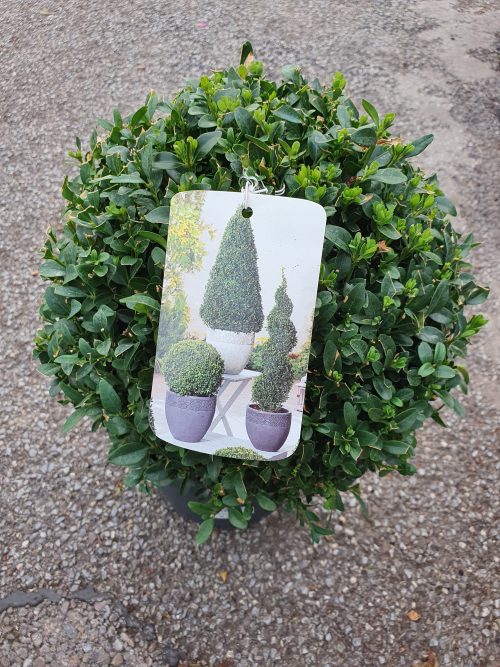
- Position: partial shade
- Soil: fertile, well-drained soil
- Rate of growth: slow-growing
- Hardiness: fully hardyA pair of these tightly clipped box spheres look great flanking a set of steps, a doorway or a path. One of our recommended plants, they're perfect for planting in a large terracotta pot in a partially shady site, where the glossy, dark-green leaves provide all year foliage, interest and structure. Box are happy growing in a sunnier spot, but the combination of dry soil and full sun may encourage poor growth and leaf scorching. If you have sandy soil it is best to keep them in a partially shady spot in the garden.
- Garden care: Ensure that the soil or compost is never allowed to dry out. Trim plants grown as hedges or topiary in mid- or late summer. If you want to maintain a really precise outline, then you can clip it twice a year - once in June, and then again in August/September. Apply a top-dressing of a balanced slow-release fertiliser such as blood, fish and bone (organic) or Growmore (inorganic) around the base of the plant in spring, making sure that none touches the leaves or stems.
-
Out of stock
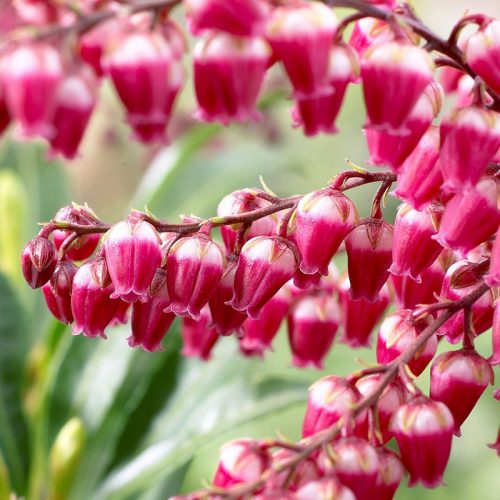
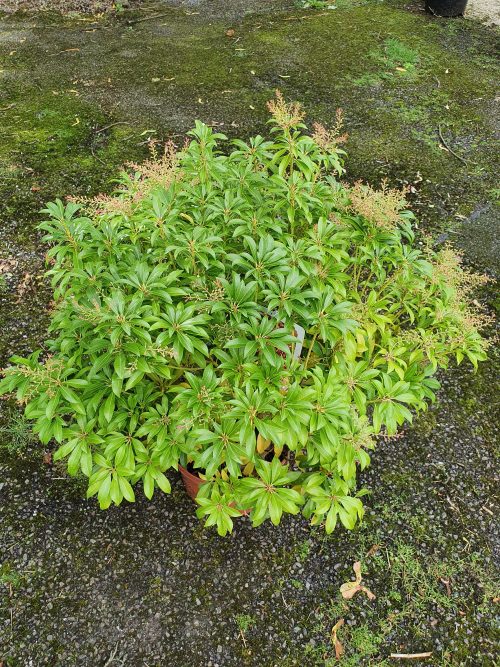 Reaching up to around a metre tall and wide, the attractive foliage is variegated in creamy white or even light yellow. The show stopping flowers are the real star and what makes this plant unique, being the first ever variegated Pieris variety to carry the masses of lily-of-the-valley-like flowers in deep red-purple. The plant is attractive in bud as they form over several weeks, to burst out in all their glory in Spring, lasting for several weeks. Later on, new shoots on the plant are produced in vivid shades of burgundy-scarlet-red, making for season long interest, and a real winner of an evergreen plant for the patio or garden. The blooms even carry a light fragrance. This Pieris is perfect for a mixed border among dwarf conifers, combined with other shrubs and evergreen, or it will simply also look great in a large pot on a patio.
Reaching up to around a metre tall and wide, the attractive foliage is variegated in creamy white or even light yellow. The show stopping flowers are the real star and what makes this plant unique, being the first ever variegated Pieris variety to carry the masses of lily-of-the-valley-like flowers in deep red-purple. The plant is attractive in bud as they form over several weeks, to burst out in all their glory in Spring, lasting for several weeks. Later on, new shoots on the plant are produced in vivid shades of burgundy-scarlet-red, making for season long interest, and a real winner of an evergreen plant for the patio or garden. The blooms even carry a light fragrance. This Pieris is perfect for a mixed border among dwarf conifers, combined with other shrubs and evergreen, or it will simply also look great in a large pot on a patio. -
Out of stock
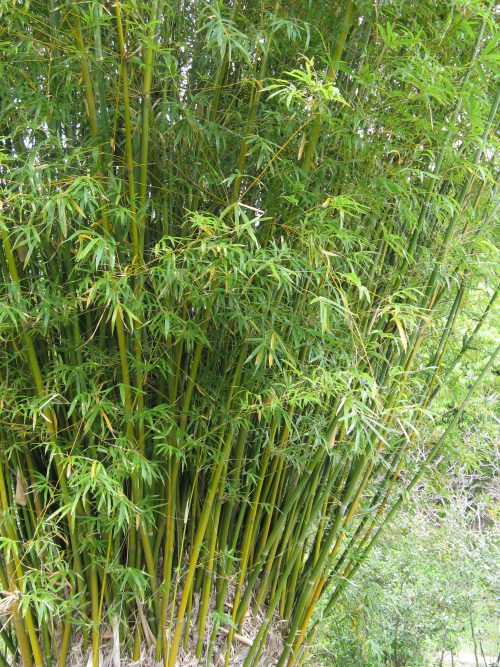
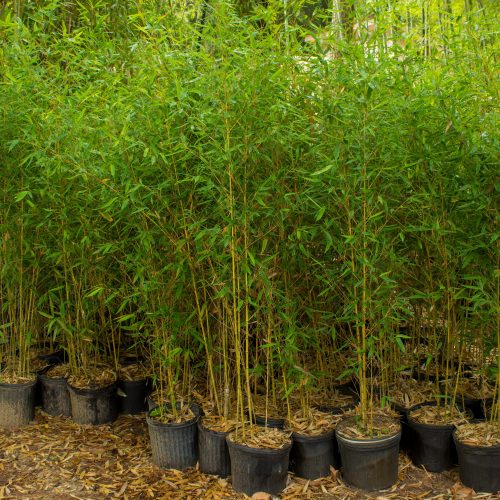 Phyllostachys are the most common of the bamboos, tall, clump forming but not invasive and evergreen, the aurea are large with bright green stems that yellow with age. Grows tall up to 4 metres and clumps well in a sheltered position. Makes an unusual but effective hedge.
Phyllostachys are the most common of the bamboos, tall, clump forming but not invasive and evergreen, the aurea are large with bright green stems that yellow with age. Grows tall up to 4 metres and clumps well in a sheltered position. Makes an unusual but effective hedge.- Size: 12 litre pot
- Actual size: 150-175cm
- Mature Height : 4m - 8m
- Mature Spread : 2m - 2.5m
- Flower Colour : None or Insignificant
- Flowering Time : None or Insignificant
- Foliage : Evergreen
- Fragrant : No
- Growth Rate : Fast
- Hardiness : Fully Hardy
- Position : Full sun, Partial shade
- Soil Moisture : Moist Well-drained
- Soil PH : Acid, Neutral, Alkaline
- Soil Type : Loam